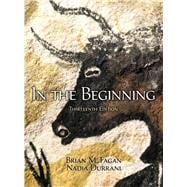Demonstrates the importance of archaeology today
In the Beginning: An Introduction to Archaeology presents the history and methods of archaeology and explores its significance today. The text introduces archeology's basic principles along with numerous examples from all over the world. Authors Brian Fagan and Nadia Durrani provide a comprehensive summary of the field for people who have little or no experience.
Features:
- Provides A Comprehensive Overview ¿ Readers gain a broad understanding of archaeology, including its interdisciplinary nature, major scientific contributions, international research, and methods and theories. A special chapter covers career opportunities in archaeology. A new organization moves archaeological theory to the beginning, so readers can develop a deeper understanding of this field.
- Offers an Engaging Introduction ¿ The jargon-free narrative provides an accessible introduction to the study of archaeology. In the Beginning is now four-color for a livelier and enriching experience.
- Explores Significant Historical Events ¿ Seven photo essays titled People of the Past appear throughout the book, covering such luminaries as pharaoh Ramses II and societies like the Cro-Magnons of late Ice Age Europe. Spectacular findings featured in Discovery boxes reflect new developments in archaeology.
- Incorporates Fresh Ideas from a New Co-Author ¿ Esteemed colleague, Nadia Durrani, has been brought on board as a co-author. She brings a wealth of field experience in Arabia, Britain, and elsewhere as well as extensive editorial experience as the former Editor of Current World Archaeology, to the team.








